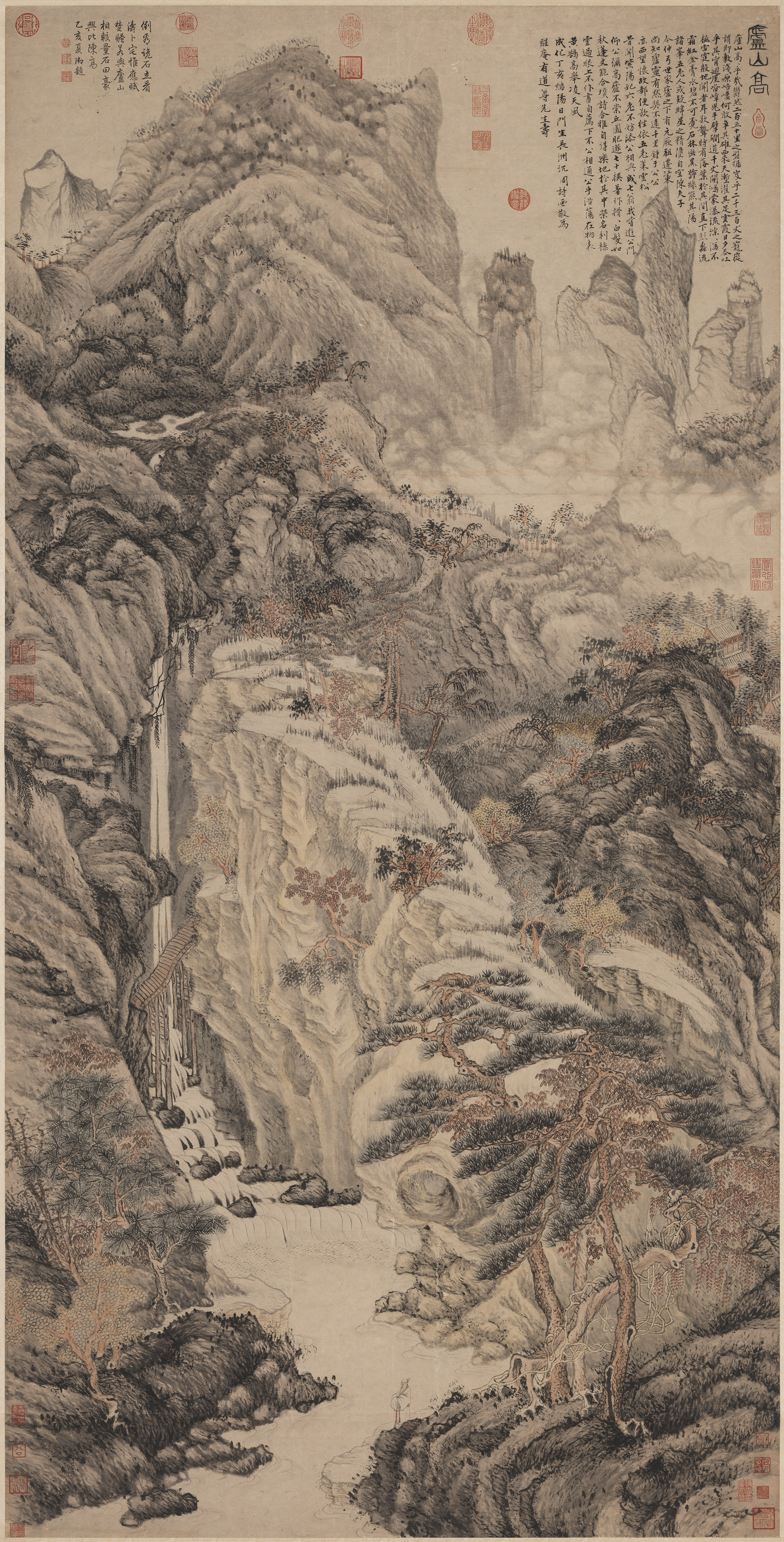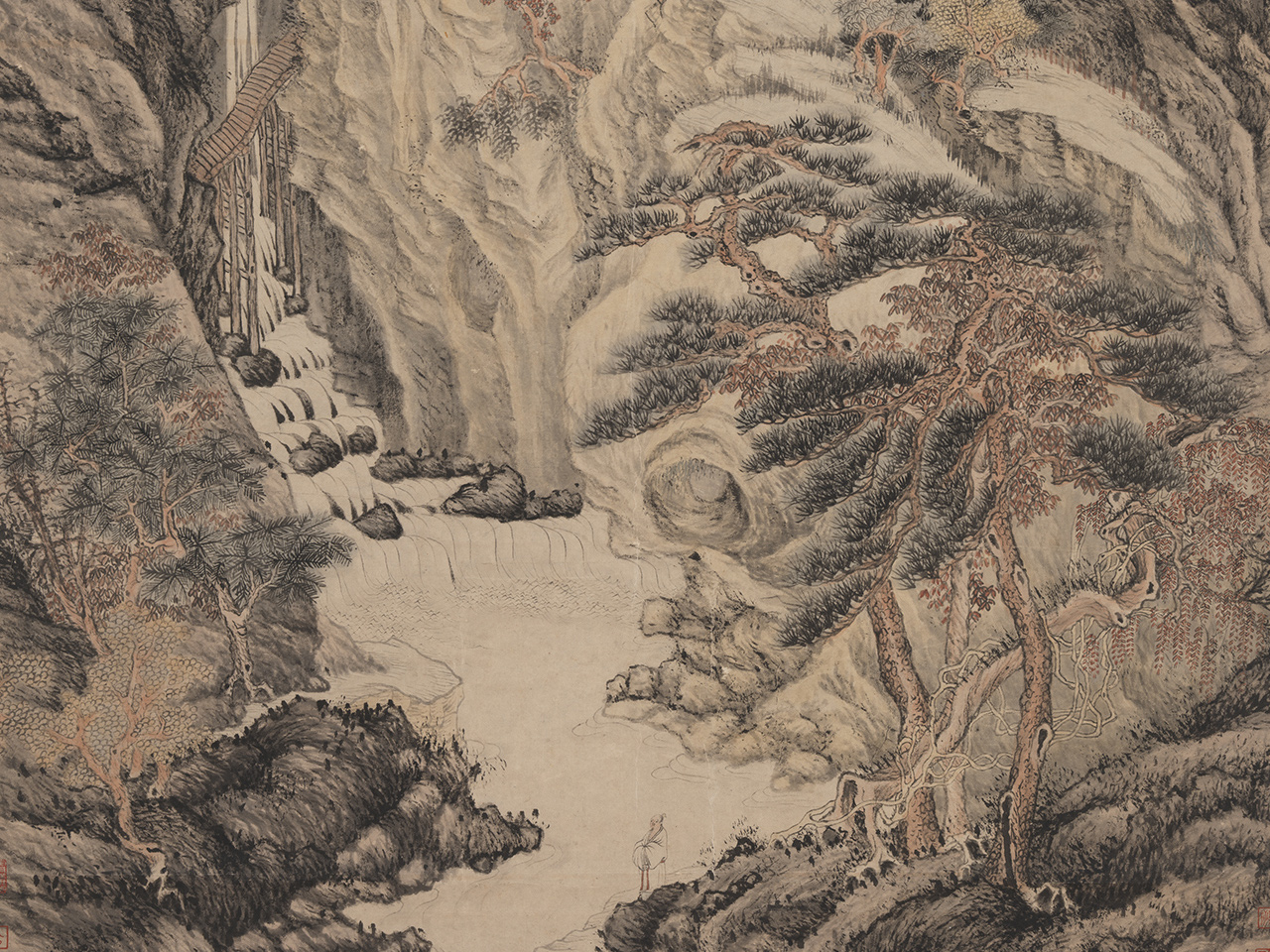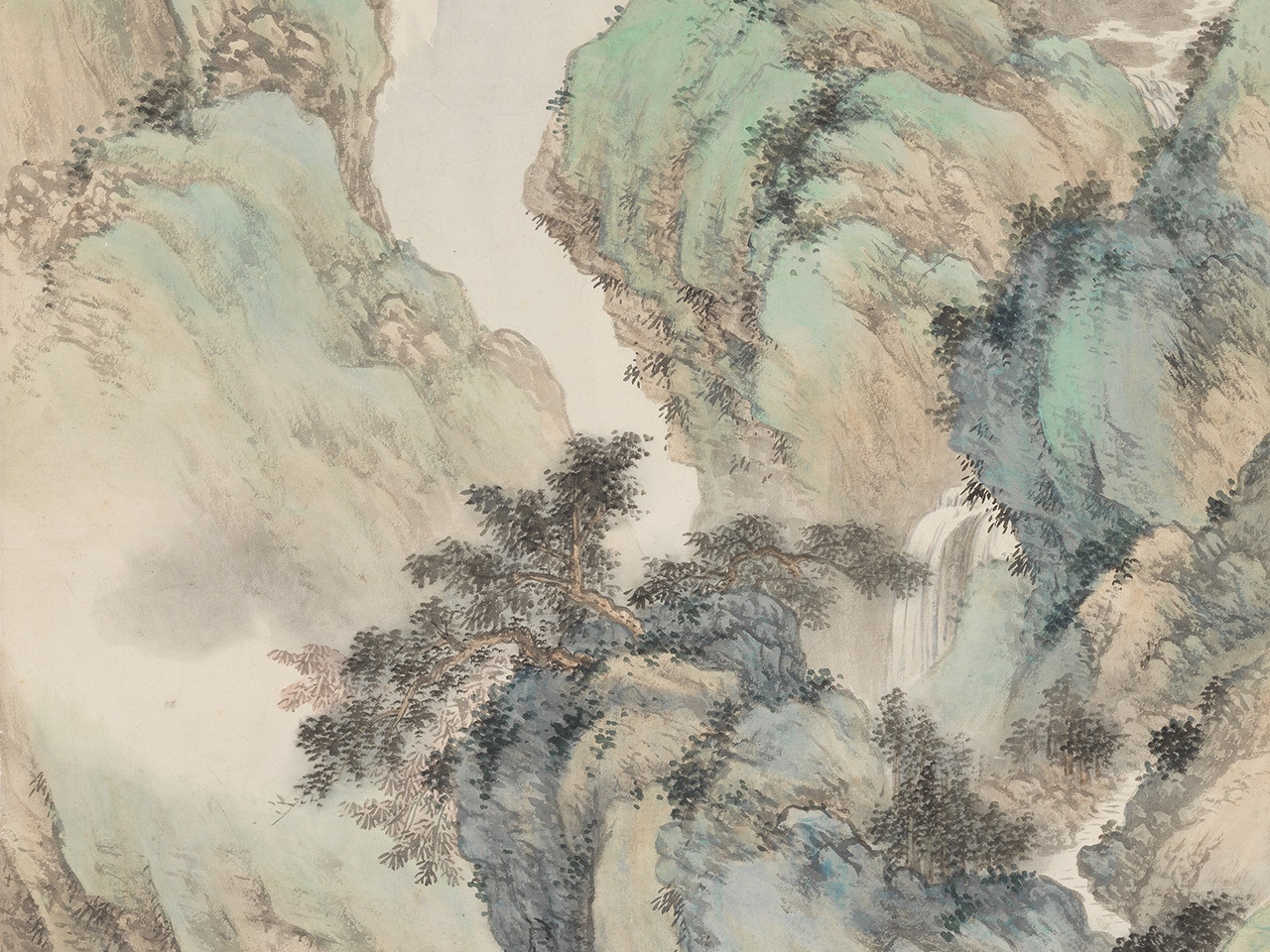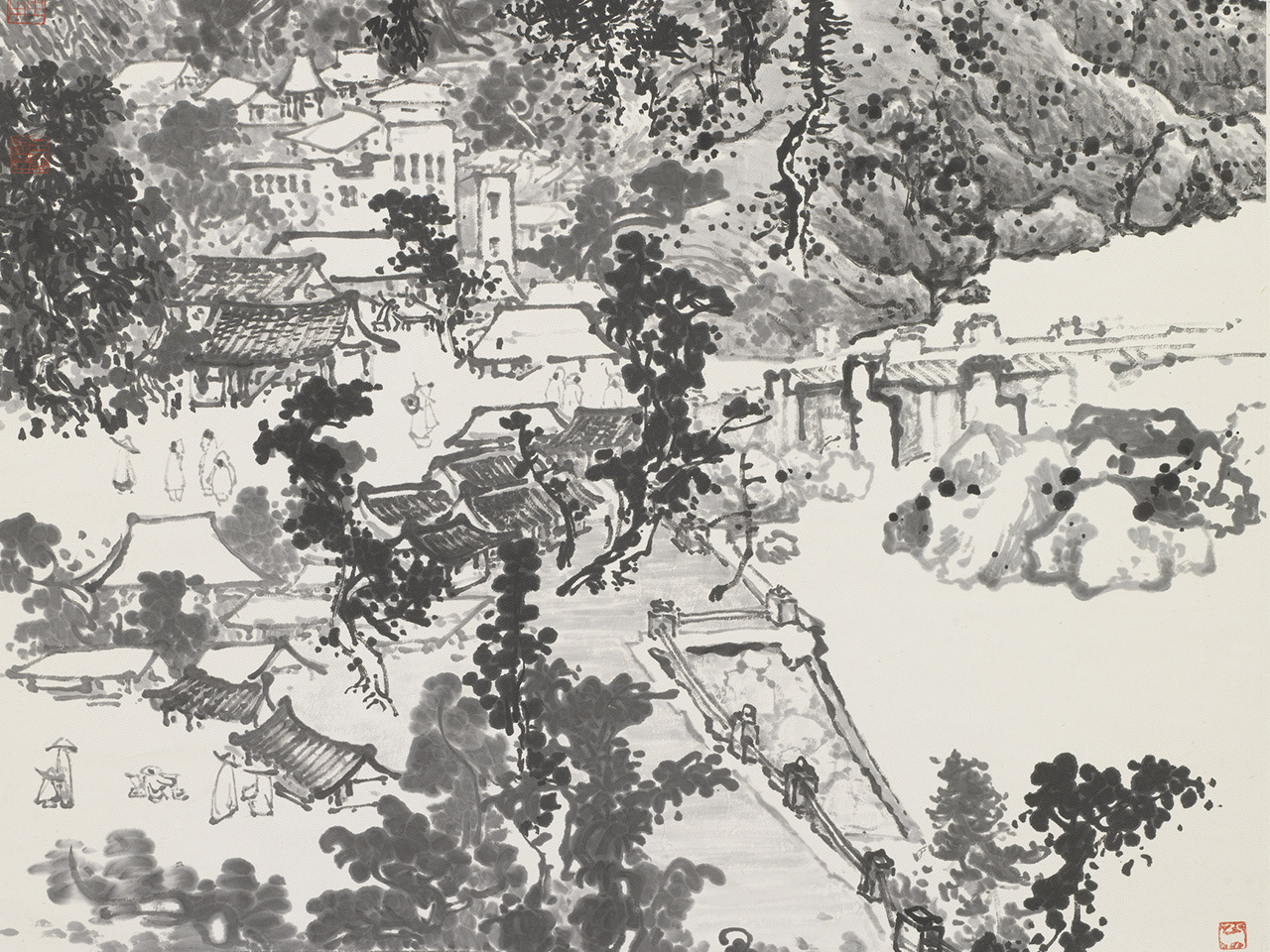The True Mount Lu
Mount Lu, also known as Kuanglu, is located within modern Jiujiang City in the province of Jiangxi. Noted for its unusually beautiful scenery and for literati gatherings of the past, paintings on the subject of Mount Lu have been made since the fifth century. But do works on scenic views need to be done on-site? And what kind of conditions were imposed on their depiction? Back in the Tang dynasty, the famous poet Li Bai (701-762) once described Mount Lu with the following two lines: "A cascading torrent plummets three thousand feet, as if the Milky Way falls from the Ninth Heaven." This poetic description undoubtedly helped form the standard imagery for Mount Lu. Shen Zhou's (1427-1509) "Lofty Mount Lu" from the Ming dynasty is an example of this kind of imaginative interpretation upon a literary image. In the following Qing dynasty, Qian Weicheng (1720-1772), in a painting of the same title, further employed his knowledge of the area to conflate several scenic sites there into a single generalized depiction. Then in the twentieth century, Qi Kun's (1901-1944) "Reminiscing on Mount Lu" is more a record of a visual impression and closer to the approach often seen in modern Chinese painting. So which one of these is the real Mount Lu? Lui Shou-kwan's (1919-1975) "Waterfall at Wulai" demonstrates how a classic artwork had left a deep impression on the painter's mind while providing a framework for how we "view" scenic views.
-
Lofty Mount Lu
- Shen Zhou (1427-1509), Ming dynasty
- 193.8 x 98.1 cm
- National Treasure
Shen Zhou (style name Qi'nan, sobriquet Shitian) was a native of Changzhou (modern Suzhou) and considered head of the Four Ming Masters.
This painting, dated to 1467, was done to celebrate the seventieth birthday of Shen Zhou's teacher, Chen Kuan. Shen used the great height of the mountain as a metaphor for the lofty virtue of his teacher. He also adopted the style of the Yuan dynasty artist Wang Meng (1308-1385) to create layers of dry brushwork that form the texture rubbing, giving the work as a whole a feeling of continuous momentum. In the foreground below stands a figure gazing up at the cascade, a scene perhaps inspired by the poem "Gazing at a Waterfall at Mount Lu" by the famous Tang dynasty poet Li Bai (701-762). However, it is unknown why Shen depicted the plank bridge in this painting, for it is unrelated to the actual environs at Mount Lu.
-
Reminiscing on Mount Lu
- Qi Kun (1901-1944), Republican period
- 109.4 x 50.6 cm
Qi Kun (sobriquet Jingxi jushi) was a native of Beijing. He participated in the Chinese Painting Research Association, which was established in Beijing painting circles during the Republican period by Jin Cheng (1878-1926). Qi Kun especially excelled at blue-and-green landscape painting.
This painting, done in 1943, depicts the Mount Lu of Qi Kun's memories. The foreground opens prominently with lush tree branches suggesting a view that has been cropped from below, a technique perhaps inspired by the framing method used in photography. Qi's painting furthermore does not focus on the main motif of a waterfall, which differs from the conventional approach to depicting Mount Lu often seen and perhaps captures his actual experience of the place. The colors in the painting are pure and elegant, the verdant landscape brimming with life.
-
Waterfall at Wulai
- Lui Shou-kwan (1919-1975), Republican period
- 272.5 x 68.5 cm
- Donated by Mei Qianping (wife of Lui Shou-kwan)
Lui Shou-kwan (Lü Shoukun) was born in Guangzhou and moved in 1948 to Hong Kong, where he became the leading figure of the "New Ink Painting Movement" and a highly influential artist.
This painting was done in 1972 as an extracurricular demonstration for the University of Hong Kong in the method of traditional Chinese-style painting. It takes a waterfall in what is now New Taipei City as the focus of depiction using Shen Zhou's "Lofty Mount Lu" as its compositional model, with the traditional street market of Wulai substituted for the foreground. Not only does this work glorify the waterfall at Wulai by comparing it to the venerated one at Mount Lu, it testifies as to how students could use methods and ideas from the ancients to view and depict the world around them.





